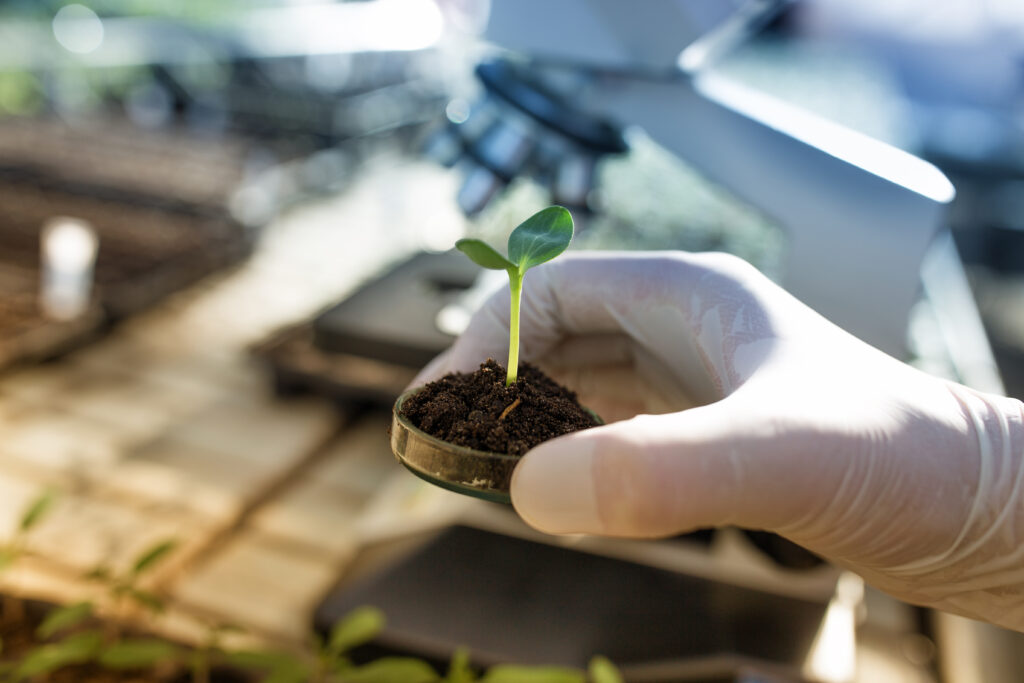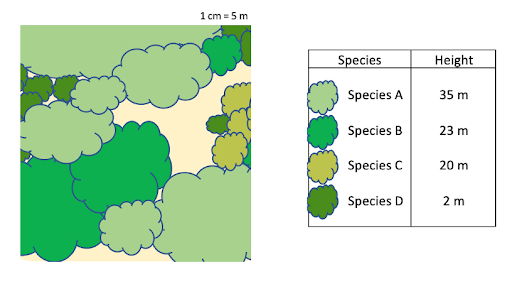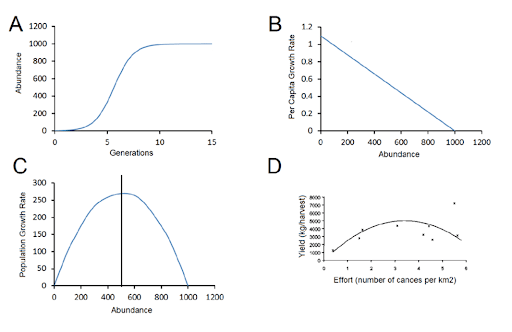Been on the look out for multiple choice practice questions you can use to study for the QCAA Biology External Assessment (EA)? Well there are plenty of questions you can use right here!
Answering multiple choice questions can sometimes be tricky, so we’ve got the answers to all 25 Biology EA practice questions for you to download.
Keen to get a solid amount of study in? Let’s go!
Biology EA Multiple Choice Practice Questions
Question 1
An RNA strand consists of the following nitrogenous bases:
AUG CCU GAG UUA
What would be the structure of the corresponding DNA strand?
(a) TUC GGU CTC UUT
(b) TAC GGA CTC AAT
(c) TAG CCA GTG AAT
(d) TUG CCU GTG UUT
Question 2
Based on the following table, which two species are most closely related?
(a) 2 & 4
(b) 4 & 3
(c) 1 & 3
(d) 2 & 1
Question 3
An individual who is homozygous for the brown eye trait has a child with someone who is heterozygous for the brown and blue traits. What is the chance that their child will have brown eyes?
(a) 100%
(b) 75%
(c) 50%
(d) 25%
Question 4
Based on the cladogram below, which of the following spider species is most closely related?
Image sourced from ScienceDirect
(a) Liphistiidae & Ctenizidae
(b) Oecobiidae & Salticidae
(c) Pisauridae & Tetragnathidae
(d) Theridiidae & Theraphosidae
Question 5
A white flower is crossed with a red flower to produce a pink flower. Which hereditary relationship is occurring in this cross?
(a) Codominance
(b) Polygenic inheritance
(c) Sex-linked
(d) Incomplete dominance
Question 6
Trisomy 21 is characterised by what karyotypic abnormality?
(a) Deletion of a chromosome 21
(b) Deletion of 21 chromosomes
(c) Addition of a chromosome 21
(d) Addition of 21 chromosomes
Question 7
Which of the following is the correct definition for the term ‘gene’?
(a) The haploid set of chromosomes in a gamete or microorganism
(b) A unit of heredity which is transferred from parent to offspring
(c) A compound consisting of a nucleoside linked to a phosphate group
(d) A self-replicating material that is present in nearly all living organisms as the main constituent of chromosomes
Question 8
Which of the following is not a correct statement about phenotypic variation?
(a) Transcription factors play a determining role in an organism’s phenotype
(b) The environment does not impact an organism’s phenotype
(c) Histone modification can influence an organism’s phenotype
(d) DNA tags can cause changes to an organism’s phenotype
Question 9
Which of the following is the correct definition for macroevolution?
(a) Evolutionary change within a species or small group of organisms over a short period of time
(b) Evolutionary change with regard to the evolution of a taxonomic group over extended periods of time
(c) Organisms better adapted to their environment survive and produce more offspring
(d) The variety of traits a species has
Question 10
In a meadow you used to be able to find white moths. However, after the construction of a factor that is now causing the air to be constantly filled with dark smog, you now only ever see dark coloured moths. What is the most likely cause for this phenomena?
(a) Competitive exclusion principle
(b) The white moths have a selective advantage
(c) The dark moths have a selective advantage
(d) The white moths didn’t like the smell of the smog
Question 11
Which of the following is not an assumption of cladistics?
(a) Change in characteristics occurs in lineages over time
(b) Any group of organisms are related by descent from a common ancestor and share the evolutionary history of that ancestor
(c) There is a bifurcating pattern of cladogenesis
(d) Organisms are only related by physiological features
Question 12
David wants to determine the abundance of wombats in a particular area of bushland in Queensland, what is the best method for doing so?
(a) Line transect
(b) Quadrat
(c) Capture-recapture
(d) Belt transect
Question 13
Which of the following most accurately describes a nucleotide?
(a) A compound consisting of a nucleobase and a 5-carbon sugar
(b) A unit of heredity that is transferred from parent to offspring
(c) A section of DNA wound around 8 histone proteins
(d) A compound consisting of a nucleobase, 5-carbon sugar, and phosphate
Question 14
Which of the following is not a feature of a pioneer species?
(a) Ability to reproduce sexually
(b) Ability to fixate nitrogen
(c) Ability to photosynthesise
(d) Ability to tolerate extreme conditions
Question 15
A strand of DNA reads:
GCT AGG CGA TCT
Identify the complementary DNA strand.
(a) CGA TCC GCT AGA
(b) CGA UCC GCU AGA
(c) CGU TCC GCT UGU
(d) CGT ACC GCA TGT
Question 16
The reproduction method characterised by a surge in offspring, with very little parental investment, and a subsequent rapid decline in population is known as:
(a) Sexual reproduction
(b) K-selection
(c) r-selection
(d) Meiosis
Question 17
Which of the following is a biotic factor?
(a) Water salinity
(b) Parasites
(c) Soil pH
(d) UV level
Question 18
The species richness for the following ecosystem is:
(a) 4
(b) 2
(c) 22
(d) 44
Question 19
Which of the following is the correct definition for clade?
(a) Organisms on opposite ends of a cladogram
(b) A group of organisms that evolved through coevolution
(c) A group of organisms that evolved through convergent evolution
(d) A group of organisms who share a common ancestor
Question 20
Coevolution can be described as:
(a) A process whereby distantly related organisms independently evolve similar traits
(b) A process whereby closely related organisms evolve different traits
(c) A process whereby there is a change in allelic frequencies during a short timespan
(d) A process whereby there is reciprocal evolutionary change between groups of species
Question 21
In a DNA strand, thymine pairs with:
(a) Adenine
(b) Guanine
(c) Cytosine
(d) Uracil
Question 22
The following is an image of:
Image sourced from BioNinja
(a) Nucleotide
(b) Nucleoside
(c) Nucleosome
(d) Nucleic acid
Question 23
In tropical forests, it is common to see orchids growing on the branches and trunks of tall trees in the ecosystem – allowing for them to get enough sunlight to survive. This symbiotic relationship is known as:
(a) Ammensalism
(b) Parasitism
(c) Commensalism
(d) Mutualism
Question 24
The population growth of a k-selective species typically follows which graph?
Graphs adapted from ResearchGate
(a) Graph A
(b) Graph B
(c) Graph C
(d) Graph D
Question 25
Which of the following is the correct definition for ecological niche?
(a) A group of organisms that share a common ancestor and all of its evolutionary history
(b) A community of organisms
(c) An area where plants, animals, and other organisms, work together
(d) A description of an organism’s position in an ecosystem, as well as it’s requirements
Solutions to Biology EA Multiple Choice Practice Questions
Click here to download the solutions to the 25 practice questions above!
Other QCAA Biology Resources
If you’ve been searching for other resources to help you study for QCAA Biology, you should check out our practice questions and resources below:
- Unit 3 Biology Data Test IA1 Practice Questions
- Unit 3 & 4 Biology External Assessment Practice Questions
- The Essential List of QCAA Biology Terms You Need to Know for Unit 3
- The Ultimate Guide to QCAA Biology Unit 3: Biodiversity and the Interconnectedness of Life
Pssssst!!! Here’s the secret to prioritising time and focus leading up to externals that most Biology students miss!
Are you looking for some extra help with the QCAA Unit 3 & 4 Biology External Assessment?
We have an incredible team of QLD Biology tutors and mentors!
We can help you master the QCAA Biology syllabus and ace your upcoming Biology assessments with personalised lessons conducted one-on-one in your home or online!
We’ve supported over 8,000 students over the last 11 years, and on average our students score mark improvements of over 20%!
To find out more and get started with an inspirational QLD tutor and mentor, get in touch today or give us a ring on 1300 267 888!
Katelyn Smith was a pioneer in the Queensland ATAR system. After graduating in 2020 with an ATAR of 98.40, she now studies a Bachelor of Advanced Science (Honours) at The University of Queensland — majoring in Physics. Through her studies, she hopes to develop a greater appreciation for how the wonders of the universe work. When she isn’t slaving away behind her unnecessarily large textbooks, she enjoys catching up with friends, scrolling mindlessly through TikTok, and sleeping.








